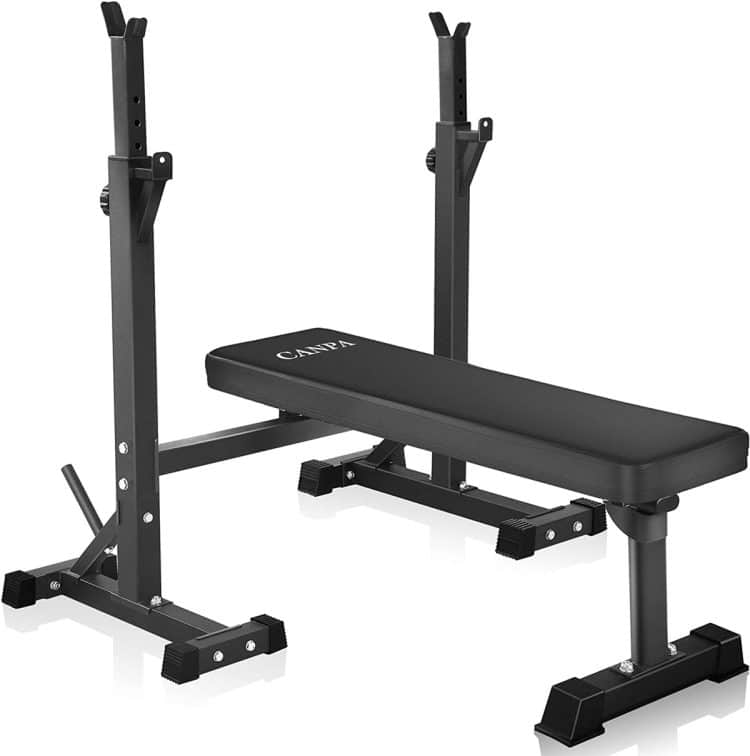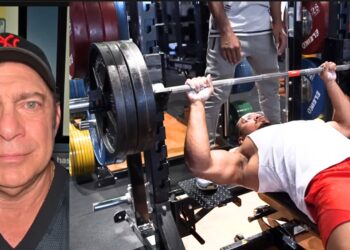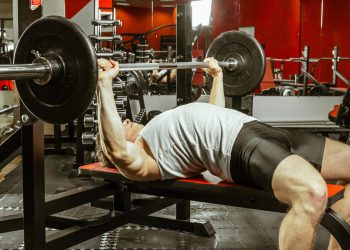The bench press is probably the most commonly performed exercise in gyms today. However, despite this popularity, the bench press is a relatively new exercise that only rose to prominence in the 1950s.
Before that, if you wanted to work your pecs, you were mainly limited to dips, push-ups, floor presses, and working out with gymnastic rings.
Nowadays, the bench press is so popular that an entire sport has been built around it – powerlifting. Bodybuilders love the bench press, too, with Mondays being known as Bench Press Day in gyms all over the world.
But, should you do flat bench presses, or are inclines a better choice? As always, the answer depends on you and what you are training for.
In this article, we compare and contrast flat and incline bench presses so you can choose the best one for your needs and goals.
Flat Bench Press
The flat bench press is the first exercise that most lifters learn. Done with a barbell, it is THE classic chest exercise. While some famous bodybuilders have built their chests without the bench press, the vast majority of exercisers who do it have found that it’s an effective muscle builder.
Level Up Your Fitness: Join our 💪 strong community in Fitness Volt Newsletter. Get daily inspiration, expert-backed workouts, nutrition tips, the latest in strength sports, and the support you need to reach your goals. Subscribe for free!
Flat bench presses aren’t just good for hypertrophy; they’re an excellent strength exercise, too. The stable platform means you can lift heavy weights relatively safely without being limited by core strength.
Several sports rely on the bench press for testing the strength and endurance of their athletes, not least the NFL Combine, where pro football wannabes see how many reps they can perform with 225lbs. The current record holder is Justin Ernest of Eastern Kentucky, who managed a staggering 51 reps (1).
Read also strongest NFL players in the world
Muscles Worked
The bench press is a compound exercise. This means it involves multiple joints and muscle groups working together. The main muscles involved in the bench press are:
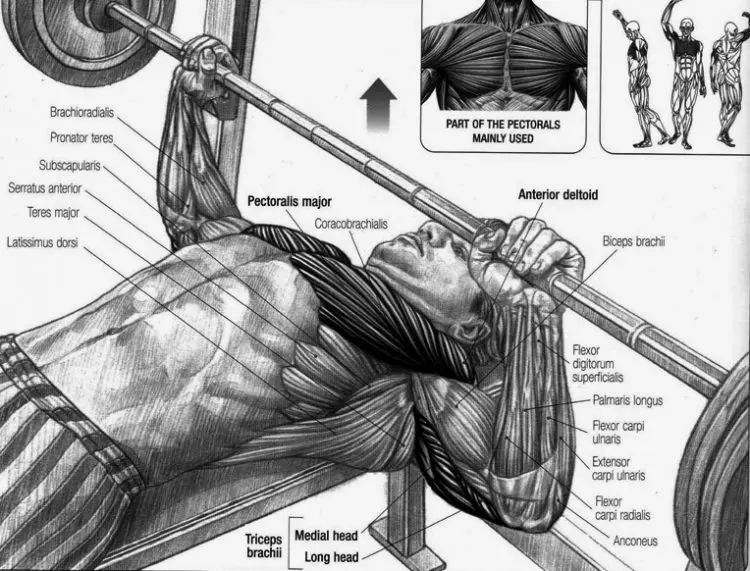
- Pectoralis major – known as the pecs for short, this is the muscle group that makes up your chest. The primary function of the pecs is horizontal flexion of the shoulder joint.
- Anterior deltoids – this is your front shoulder muscle. It works alongside the pecs to flex your shoulder joint.
- Triceps brachii – usually just called the triceps, this is the muscle on the back of your arm. Its role in the bench press is elbow extension.
- Latissimus dorsi – despite being a back muscle, the lats play an essential part in bench pressing. They help stabilize your shoulders, providing a stable base from which to raise and lower the weight.
- Rotator cuff – the collective term for the subscapularis, teres minor, and supraspinatus muscles, which help stabilize the shoulder joint.
- Serratus anterior – this is the saw blade-shaped muscle over and between your upper ribs. It helps keep your scapulae flat against your upper back during bench presses, increasing upper body stability.
- Middle trapezius and rhomboids – located between your shoulder blades, your mid traps and rhomboids pull your scapulae together to stabilize your shoulder joint.
- Biceps brachii (short head) – the short head of the biceps is located on the front of your upper arm. Its function is to stabilize your shoulder and flex your shoulder joint.
- Core and lower body – for an upper-body exercise, the bench press also involves a lot of lower-body activity. The harder you brace your core and legs, the more stable you’ll be. Increased stability means less wobbling and wasted energy and better bench press performance. The bench press IS an upper body exercise, but your legs and core are involved too, albeit to a lesser degree.
How to do Flat Bench Presses
A lot of lifters think they can bench press but fail to do this important exercise properly. Incorrect technique increases your risk of injury and will also limit the amount of weight you can lift or the number of reps you can perform.
Get more from the flat bench press by learning to do it right!
- Lie on the bench with your eyes directly beneath the bar. Reach up and hold the bar with an overhand, slightly wider than shoulder-width grip. For most bench press variations, your forearms should be vertical at the bottom of each rep.
- Brace your abs, pull your shoulders back and down, arch your lower back slightly, lift your chest up toward the bar, and push your feet into the floor. This will help stabilize your body.
- Unrack the bar and hold it directly over your chest.
- Bend your arms and lower the bar with control until it lightly touches your sternum. As the bar descends, tuck your elbows down and slightly inward toward your sides. Do not bounce the bar off your chest. Instead, imagine you have a pane of glass on your chest and touch the bar down very lightly.
- Push your bar up, flaring your elbows as the bar nears the top of your rep. Extend your arms fully without locking your elbows.
Flat Bench Press – Pros
Is the bench press the best chest exercise for you? Check out this list of pros and then decide!

Easy to learn – the flat bench press is a relatively straightforward exercise that most lifters soon get to grips with. Of course, there are special techniques for lifting more weight, such as arching, tucking the elbows, and leg drive, but you don’t need to master those things right away.
A recognized test of strength – even if you aren’t a powerlifter, you can still use the bench press to measure upper body strength and compare your results to other lifters of the same gender, age group, and weight category.
Good for building endurance, muscle mass, or strength – you can use the bench press to develop several different muscular fitness components. This helps to explain the universal appeal of the bench press.
Lots of variations to try – there are several different ways to perform the flat bench press, including:
- Paused bench presses
- Bench presses from pins
- Partial bench presses
- Bench presses with bands or chains
- Board presses
- Banded bench press, etc.
Widely available – most gyms have at least one bench press station. Wherever you go, you should be able to find a gym where you can do bench presses. Home lifters can also do the bench press as all you need is a barbell and a flat bench.
Flat Bench Press – Cons
The flat bench press might be the world’s favorite barbell exercise, but that doesn’t mean there aren’t a few drawbacks to consider, too:
Shoulder pain – the flat bench press is notoriously hard on the shoulders and can even lead to chronic shoulder pain. Pressing on a flat bench prevents scapulae or shoulder blades from moving, which can put stress on the shoulder joints. For this reason, some lifters are forced to give up bench presses in favor of more shoulder-friendly exercises like floor presses and push-ups.

Safety – a failed bench press rep can cause serious injury. The bar can come crashing down on your chest or just get stuck there if you cannot lift the bar. For this reason, you should bench press heavy weights with a spotter or in a power rack.
Biomechanical issues – despite its popularity, some people aren’t built to be good at the bench press. For example, if you have long arms, narrow shoulders, or a shallow chest, you may find that the bench press is unproductive or even uncomfortable. The good news is that the bench press is not compulsory, and there are plenty of other chest exercises you can do instead.
Incline Bench Press
The incline bench press is a popular alternative to flat bench presses. Most incline press benches are set to 30-45 degrees and designed to increase upper chest activation. While not used as often by powerlifters, the incline bench press is a pec training staple for many bodybuilders.
Muscles Worked
The incline bench press uses all of the same muscles as the flat bench variation. However, electromyographical studies reveal that the incline bench press increases activation of the clavicular (upper) head of the pecs and anterior deltoids compared to flat bench presses.
In contrast, the activation of the sternal (middle) and costal/abdominal (lower) heads decreases slightly (2).
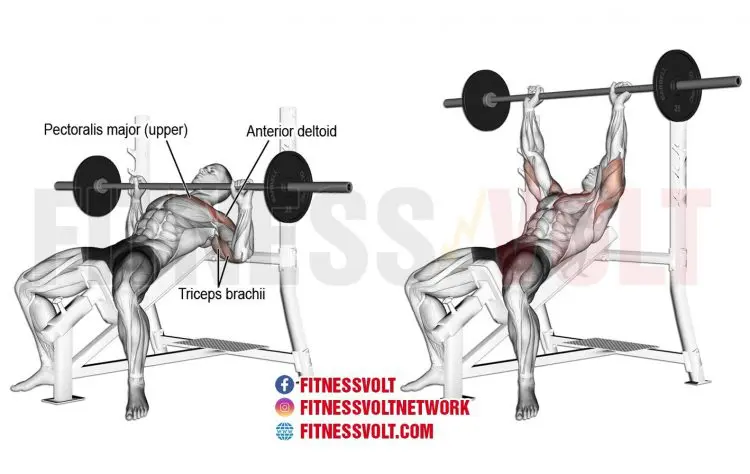
How to do incline bench presses
The performance of the incline bench press is very similar to the flat bench press. The angle of the bench dictates how the exercise is performed. That said, here’s a brief overview of how to do incline bench presses:
- Lie on an incline bench at a 30 to 45-degree angle.
- Grip the barbell wider than shoulder width, and make sure your wrists are straight to support the weight.
- Tuck elbows in slightly to prevent shoulder strain.
- Position your feet firmly on the floor and arch your back.
- Unrack the barbell and slowly lower it to a few inches above mid-chest while retracting your shoulder blades.
- Drive through your heels while you push the barbell back to the top and contract your chest through the movement.
- Repeat.
Related: Average Incline Bench Press By Weight, Gender, and Experience Level
Incline Bench Press – Pros
Can’t decide if the incline bench press deserves a place in your workouts? Consider these benefits and then decide.
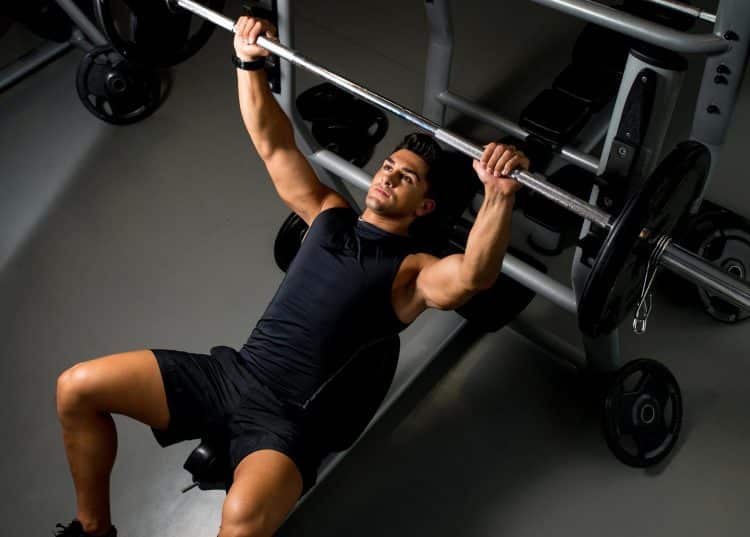
Variety – while the flat bench press is an excellent exercise, if that’s all you ever do, your workouts could become boring. The incline bench press is a great alternative that you can use to keep your workouts interesting and productive.
Shoulder health – some exercisers find the incline bench press more comfortable and less stressful for their shoulders. If flat bench presses bother your joints, you may find some relief if you switch to incline bench presses.
Upper chest hypertrophy – if you want to build an aesthetically pleasing physique, you must work your lower, upper, and middle chest. The incline bench press is more upper pec-centric and could help you sculpt a more evenly developed chest.
Greater range of motion – while this isn’t a significant advantage, it’s worth noting that most lifters can move the barbell over a greater distance with incline bench presses compared to the flat variation. This may be beneficial if you want to increase shoulder mobility (3).
Level Up Your Fitness: Join our 💪 strong community in Fitness Volt Newsletter. Get daily inspiration, expert-backed workouts, nutrition tips, the latest in strength sports, and the support you need to reach your goals. Subscribe for free!
Incline Bench Press – Cons
As always, there are a couple of downsides to most exercises, and that includes the incline bench press:
You won’t be able to lift as much weight – most lifters are up to 20 to 30% weaker with incline bench presses compared to the flat variation (4). The steeper the angle, the more pronounced this effect becomes. As such, the incline bench press is less useful for building strength, although it’s still an excellent hypotrophy exercise.
Safety – like the flat bench press, there is a risk of getting crushed under the bar if you cannot press the bar to complete lockout and rerack it. Because of this, you should always do incline bench presses with a spotter.
Flat Bench vs. Incline Bench Press
So, now that you know a little more about flat and incline bench presses, let’s judge these exercises by a few different criteria:
Strength
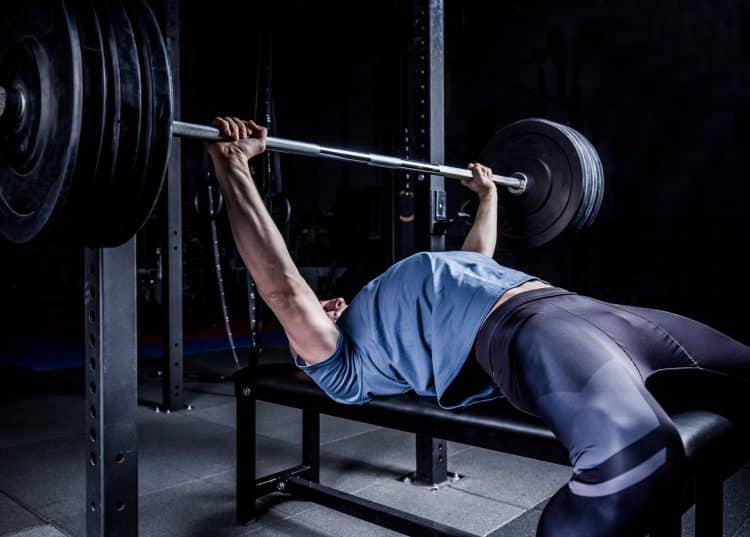
While both types of bench press can increase your strength, the flat bench press is arguably the best choice if you want to get as strong as possible. Most lifters can flat bench more than they can incline press. Strength increases are directly affected by how much weight you can lift.
Winner: Flat bench press
Hypertrophy
Both of these pec exercises can help you build a bigger chest. The main difference is the regions of your pecs that they engage. Flat bench presses are more of a general chest exercise, while incline bench presses work your upper pecs more.
Choose the one that hits the muscles you want to develop. Or, as most bodybuilders do, use both exercises to maximize overall chest size.
Winner: It’s a draw!
Safety
Flat and incline bench presses can both be performed safely, especially if you have a spotter on hand to help you out if you are unable to complete a rep. That said, you may find flat bench presses are a little harder on your joints than inclines, but that’s not always the case.
Winner: It’s a draw!
Ease of learning
The angle of bar travel during incline bench presses may feel a little awkward compared to flat bench presses, especially for beginners. As such, the flat bench press is usually simpler to learn. Once mastered, this will make the incline bench press easier to perform.
Winner: Flat bench press
Equipment
The flat bench press is the most popular barbell exercise in the world. There aren’t many gyms without dedicated bench press stations. Incline presses are not as popular, so some gyms may not have the necessary equipment to do them. However, you can always do incline dumbbell bench presses, so this doesn’t have to be too much of an issue.
Winner: Flat bench press
Long-term progression
Both types of bench presses are suitable for long-term progression. There is no reason to expect your flat or incline bench press progress to plateau anytime soon.
That said, as your strength potential is greater with the flat bench press, you may find that you can keep on adding weight or doing more reps for longer. However, most lifters’ genetic potential for both of these exercises is a long way off.
Winner: it’s a draw!
Variety
The incline bench press is already a variation of the flat bench press, and there aren’t too many ways you can change this exercise. In contrast, there are lots of different ways to do flat bench presses, many of which are designed to increase bench press performance.
Winner: Flat bench press
Read also:
- Bench Press vs Push Ups: Which One Should You Do?
- 15 Best Barbell Bench Press Variations
- Bench Press Alternatives For A Big, Powerful Chest
- 8 Ways to Boost Your Bench Press
- 10 Non-Bench Press Moves for A Bigger Chest
- 13 Unique Bench Press Variations for Massive Pecs
- Hit a Bench Press PR With The Smolov Jr. Program
- Wide Grip Bench Press: A Kickass Chest Workout
Wrapping Up
In the battle of the pec exercises, there is no clear winner between flat and incline bench presses. Both exercises have their benefits, as well as their drawbacks. The right one for you depends on your training goals and your current level of strength and experience.
The flat bench press is arguably best for building pure strength and is an excellent general chest exercise. Most gyms have a flat bench press station, so it’s a very accessible exercise. However, the bench press can be hard on the shoulders.
The incline bench press is not so good for building strength, as the angle reduces the amount of weight you can lift. That said, it emphasizes the upper chest, which means it may be a better choice if you want to preferentially build that pec region.
Of course, there is no need to choose one exercise and forgo the other – you can do both. For most exercisers, that’s usually the best option.
Whichever one you choose, or even if you do them both, make sure you use good technique and increase the difficulty of your workouts from one week to the next. If you don’t, you could soon find yourself in a progress rut, going nowhere fast.
The flat bench press AND incline bench press are good chest exercises, so use them both. That said, depending on your goal, you may need to put more effort into one than the other.
References:
1. NBC Sports: Here are the strongest players in NFL Scouting Combine history https://www.nbcsports.com
2. PubMed: Effect of Five Bench Inclinations on the Electromyographic Activity of the Pectoralis Major, Anterior Deltoid, and Triceps Brachii during the Bench Press Exercise https://pubmed.ncbi.nlm.nih.gov/33049982/
3. PubMed: Effects of Range of Motion on Resistance Training Adaptations: A Systematic Review and Meta-Analysis https://pubmed.ncbi.nlm.nih.gov/34170576/
4. PubMed: The Effects of Bench Press Variations in Competitive Athletes on Muscle Activity and Performance https://www.ncbi.nlm.nih.gov/pmc/articles/PMC5504579/

